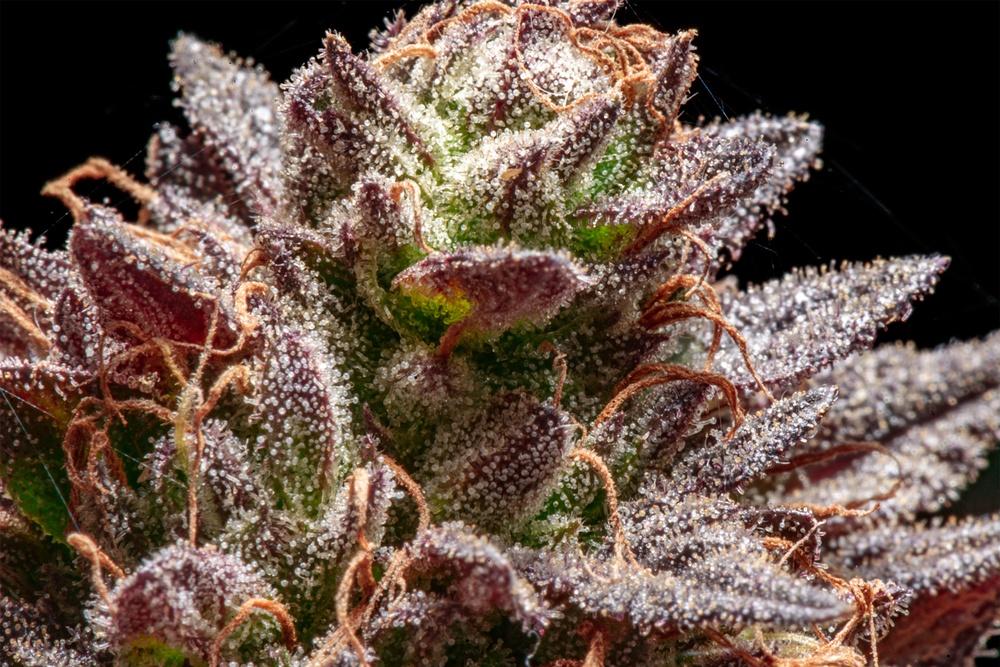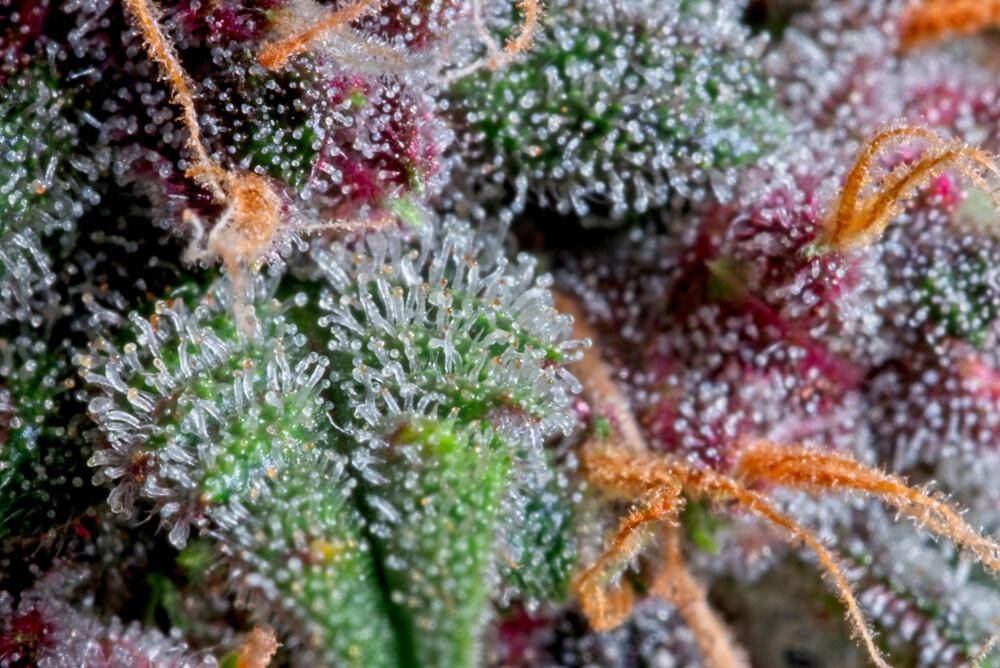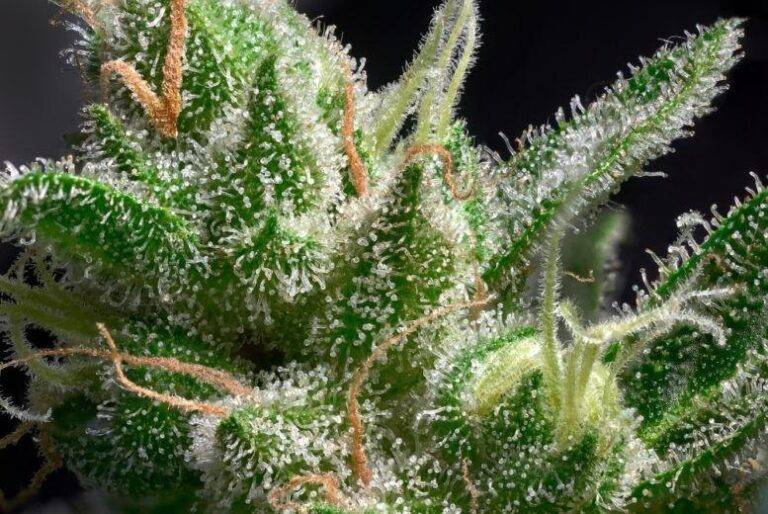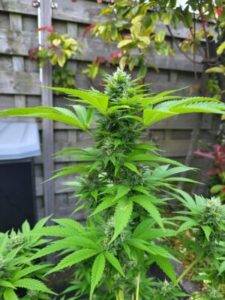Ever wondered what the sticky stuff is on top of your flower tops? This is a layer of resin, produced by the trichomes of your weed plant. Concentrates such as Wax, hashish and BHO are made from that sticky resin. Trichomes are therefore an important part of your plant, whether you are a medical user or a recreational enthusiast. Read on and discover everything about why cannabis trichomes are important
Why are cannabis trichomes important?
To see the trichomes well, you need to look very carefully at the layer of resin on top of your buds. If you focus well, you see a kind of small hairs, those are the trichomes. If you cannot see them with the naked eye, use a magnifying glass. Together they form a whole bunch of small stems with a kind of hats that look like mushrooms. Trichomes are thread-shaped outgrows. But you should not confuse them with pistils, which you can see much more easily. Read on and discover more about the importance of cannabis trichomes.
Trichomes are on the sugar leaves and the flowers of the cannabis plant. They are packed with THC and CBD. The CBD-rich trichomes contain all kinds of medical benefits. And the THC-rich trichomes provide that blissful high. Trichomes are small production units which manufacture all the valuable cannabinoids.
Trichomes grow on every healthy, mature cannabis plant. Buy Girl Scout Cookies seeds if you want powerful buds covered in a sticky layer of delicious resin. Read on and discover more about the importance of cannabis trichomes.
Why are trichomes important for cannabis plants?
Trichomes protect the cannabis plant. The sticky resin forms a kind of shield against insects and mold. Trichomes are therefore a kind of guard. But they also protect the plant against the sun. You can see trichomes as a kind of sunblock against UV radiation. In addition to heat, trichomes also protect the plant against cold. The resin forms a layer that keeps the plant warm in extreme, cold climates.

What do trichomes do?
Cannabis trichomes have several important functions. They produce a sticky resin, packed with active substances. Besides that, they produce a wide range of cannabinoids including the well known CBD and THC. In addition they also produce terpenes that provide the aroma of the plant. So trichomes are involved in the smell as well as the taste and potency of cannabis. Trichomes are real multitaskers!
Trichomes produce a wide range of cannabinoids in cannabis
Here’s an overview of cannabinoids present in the cannabis plant. Cannabinoids is a group of medical compounds that interacts with receptors in the human body.

A cannabis plant has many more elements that you see with the naked eye. You can hardly see Trichomes. And yet they are very important for the plant. Trichomes are found on all marijuana plants. They mainly cover the tops of your favorite plant, but if you look closely, they are also present on the leaves. However, you will find the highest concentration of trichomes on the tops of your flowers. Trichomes look shiny, because they are a bit sticky. And within these sticky, crystal-shaped things, are the fragrant aromas.
Did you know trichomes also produce Kief?
The word Trichomen comes from the Greek Tríchōma, which literally means hair growth. If you look closely, the crystal-shaped buttons are on tiny hairs. If you take a closer look at everything, it looks like a science fiction landscape. Like those different shapes and colors and structures. It is a good idea for every grower to take a closer look at the plant – and in particular the buds – with a magnifying glass. You see the most amazing shapes and colors when you look at your cannabis plant in close up.
The definition of trichome is actually the same as outgrowth or appendix. But these small appendages are the producers of all those countless terpenes, cannabinoids, flavonoids that make cannabis unique and effective.
What exactly do trichomes do on weed plants?
If you think that trichomes are only present on marijuana plants then you are wrong. Trichomes also occur in many different plant species. It seems that they are even present on meat-eating plants and also have an important task there. They attract prey and help the plant catch food.
In the wild, trichomes in cannabis plants have an important function that many growers do not know about. What happens when female plants start flowering? The flowers attract all kinds of animals and insects and this makes the weed plant a vulnerable prey. But the trichomes ensure that animals stay at a distance. They spread a scent that many animals find unpleasant. Trichomes also make the taste of the plant bitter for animals, so that they think twice before putting their teeth into it. Trichomes therefore protect the cannabis plant in different ways. It is a deterrent that keeps intruders at bay thanks to the aroma and taste. This makes the buds indigestible for many insertions and small animals.
Other functions of trichomes
But trichomes also protect the cannabis plant against the weather. The sticky layer of resin that trichomes produce forms a protection against the cold, but also against heat and harmful UV radiation. So trichomes do not play a double role in protecting your plant, but it is multi-taskers that help your plant in different ways.
The different types of trichomes on weed plants
At first glance, trichomes all seem the same. But if you look closely, there are differences. Not only do they differ in how they look, but also in terms of effect.
There are 3 types of trichomes that often occur on weed plants. The first sorst is the smallest. These small beads are only 10 micrometers and consist of single cells. Then there are also trichomes that not only consist of a ball, but they also have a small stem. There are many of these species. Yet they cannot compete with the king of all trichomes: the so-called capitated trichomes. Capitated trichomes can grow up to 100 microns wide and can be seen with the naked eye. They consist of a stem and hypodermic cells that are attached to glandular heads. These glandular heads are full of cannabinoids and terpenoids.
Each of these 3 types of trichomes make cannabinoids. But the largest species makes the most esoteric oils. They grow in abundance near the flowers, in the chalice.
The production of trichomes
The development of cannabinoids through trichomes originates from the start of the flowering phase of your cannabis plant. Along with the creation of flowers, small trichomes appear everywhere. They carry plastids and vacuoles through their small stalks to the heads. Cells in the head metabolize and that is the start of producing cannabinoids.
But what causes which and how many trichomes are produced by a cannabis plant? In the first place, this is already fixed in the DNA of the plant. The genetics embedded in the seed of the plant determines how many trichomes will grow, where they grow and what type of trichomes you will find.
Other elements that influence the production of trichomes

But there are even more elements that influence the creation of trichomes. It is not always the case that weed plants with a lot of trichomes also produce a lot of terpenes and cannabinoids. The amount of light to which plants are exposed has a major influence on the process of synthesis of the terpenes and cannabinoids in the bud of the trichomes.
Does your plant get more and a broad spectrum of light? Then it will generally produce more cannabinoids. But it also depends per strain on how a plant reacts to light and what that effect has on producing trichomes.
The trichomes on your plants are very delicate and volatile. There are all sorts of things that influence the quality of your trichomes. These include time, oxygen, light and oxygen. The trichomes themselves can become contaminated, but the oils they carry can also deteriorate in quality.
Handle your plants with care to not damage the trichomes
In order not to damage trichomes, you must handle the plant with care. Remember that any touch can cause damage. So when moving, pruning and harvesting always make sure that you first think and act with caution. It is best to move your plant as little as possible. That is why it is important that you determine the best place to start your garden before you start growing. So that you don’t have to move your plant later, with all the risks of damage.
The entire process of harvesting, drying, and curing your cannabis tops also influences how your trichomes last. If you do that correctly, the trichomes will much better retain all the cannabinoids and terpenes that are in them. The result is that your weed will have a better taste, aroma and effect.
Any comments? Leave them in the comment box below!





